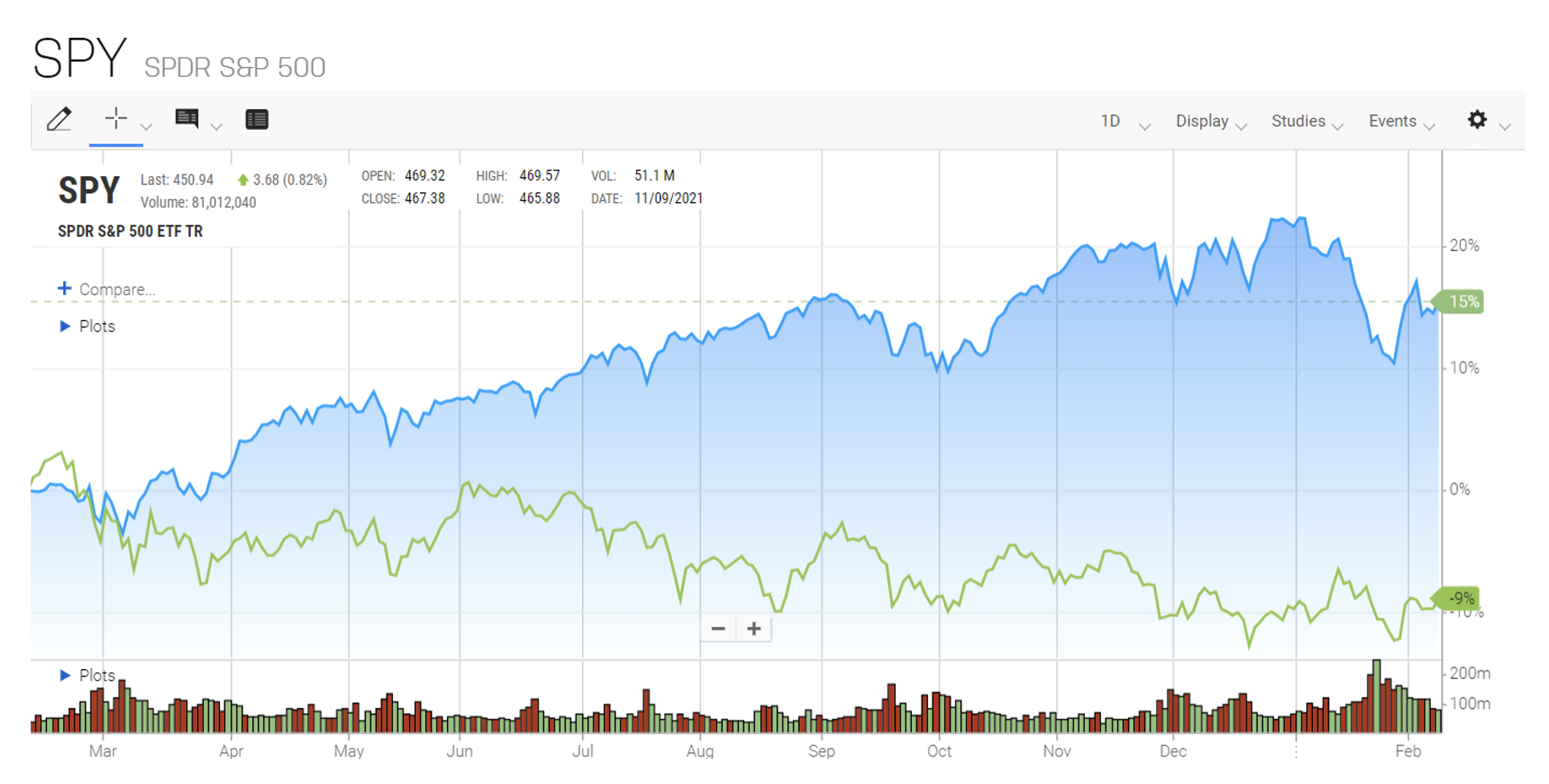With moves by the Fed this year now in the category of a certainty, both in terms of reducing QE and raising rates, a lot of investors are looking for somewhere to hide. Traditionally, when that is the case, it is a question of dialing down risk in your portfolio, but that just doesn’t work right now. In fact, to escape the problems facing investors, it may pay to invest in something usually regarded as very high risk and only suited to boom times: emerging market equities.
The problem is that there is nowhere to hide if you look only at conventional wisdom. The traditional “safe haven” plays cannot be expected to perform any better than stocks as the Fed starts to move and may even do worse. Cash is not a good idea, because deposit interest rates at around 0.5% and inflation around 7% ensure that you will lose money in real terms on any cash holdings for a while. The same “real return” problem exists in bonds, but with an additional whammy too. Rising rates mean falling bond prices, so not only do you lose money in terms of an inflation adjusted value, but you also face losses in the nominal value of bond holdings.
There are other places to go, but there are potential problems with all of them. The inflation trades, things like real estate, gold, and commodities, have already soared and aren’t places to be as a central bank gets serious about taking on inflation. You could try crypto, which has already adjusted downwards, but that is probably too volatile and risky for most people. Nor is the average investor going to want to acquire an NFT portfolio.
So, we are left looking for areas of the equity market that won’t get hit as hard as average, or may even gain a couple of points, things like financials, maybe, or big companies with pricing power. The problem there is that with the Fed having been talking about switching tack for so long without actually doing anything, the impacts of the changes are now fully priced into those areas. The financials ETF, XLF, for example, has gained well over 30% over the last year, more than three times the gain in the S&P 500.
The thing is, there is always somewhere to go in uncertain markets. If you have decades of experience like I do, there will have been numerous times when you looked back after a period of upheaval and armed with 20/20 hindsight, said “Ah, that’s where I should have put my money!” I have found that very often that place will have been somewhere where the risks were perceived as being the greatest, so had already been priced in once the anticipated change came. That brings us to emerging market equities.
Usually, they are reactive to the Fed’s changes but this time around, they are ahead of them. Major emerging markets such as Russia and Brazil have been raising rates for a while and seem to be near the end of their policy tightening phase. That is, in part, why their stocks have done so poorly versus U.S. equities over the last year as the chart below, comparing SPY and emerging market ETF VWO, demonstrates.

VWO could fall further, of course, but does it make more sense to invest somewhere that has already reacted to rising rates, or in something that has gained 15% as that story has unfolded, but where hikes are yet to come?
I would add one caveat here. There is one major part of what is considered to be “emerging markets” where the above argument doesn’t apply. China have continued cutting rates as other developing countries have been hiking, in an attempt to restore growth and give themselves a competitive edge. There is, therefore, a risk that they will reverse course. However, as that has played out over the last year, the FTSE China index has dropped around 30%. The market presumably feels that the rate cuts are a result of economic weakness, so a reversal may turn out to be a positive sign.
For investors, these are unique and trying times. We have all seen significant gains since the drop in the spring of 2020 but, as policies are instituted that will negatively impact stocks and bonds, it is difficult to see where you can go to protect those gains. The answer, in part, may be a counterintuitive one, shifting some money from “safe” U.S. markets to “risky” developing ones.
Do you want more articles and analysis like this? If you are familiar with Martin’s work, you will know that he brings a unique perspective to markets and actionable ideas based on that perspective. In addition to writing here, Martin also writes a free newsletter with in-depth analysis and trade ideas focused on just one, long-time underperforming sector that is bouncing fast. To find out more and sign up for the free newsletter, just click here.
The views and opinions expressed herein are the views and opinions of the author and do not necessarily reflect those of Nasdaq, Inc.

